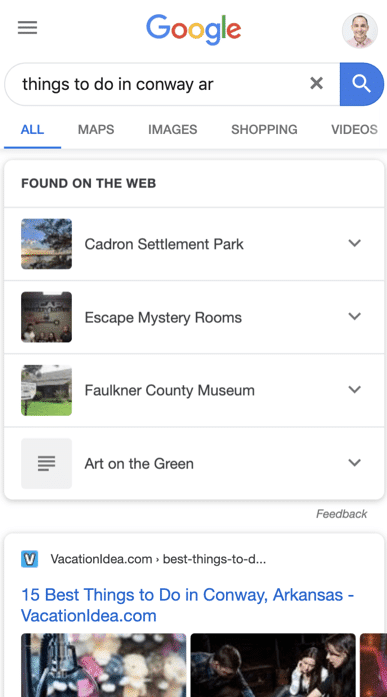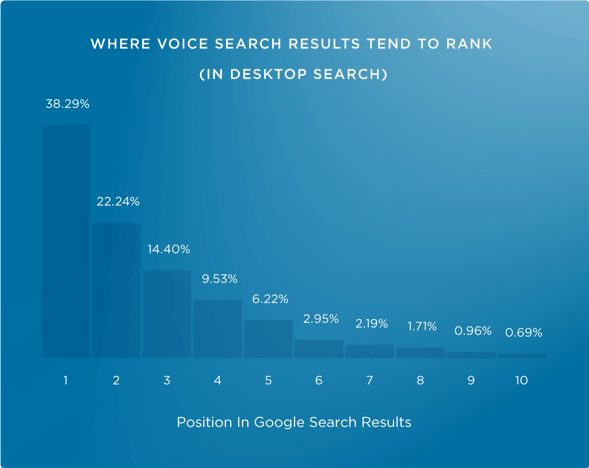September 27, 2019
SEO in 2020: What You Need to Know
A Greek philosopher named Heraclitus once made the statement that “Change is the only constant in life,” and while this may be up for debate in many areas of our lives, one area that it certainly holds true is SEO.
Web search has evolved from a useful tool 20 years ago to a major component of our lives and one of the world’s largest industries today. SEO (Search Engine Optimization) is how we leverage this search to the benefit of our brands and our businesses.
In a nutshell, SEO is how we get found online. While the fundamentals have remained the same over the last couple of decades, the tactics have changed remarkably.
SEO Today
In just the last few years, SEO has made some dramatic advancements. Many of the tactics used even a year ago are already outdated, and it’s not a stretch to assume that the tactics we use now will be obsolete in the next year.
Ever focused on delighting their users, search engines like Google and Bing are constantly updating their software to ensure continued success and market dominance. Recent updates have included using curated data to provide immediate information, the segmentation of users based on their location and devices, and the prioritization of unique content (in a literal sea of unoriginal text, images, and video).
So, as we move into the second decade of the second millennium, where is SEO going, and what can you do to stay relevant?
SEO in 2020: What You Need to Know
“Isn’t SEO just putting as many keywords as you can fit into a webpage?” – Real question we still receive in 2019.
To begin, let’s outline the shifts we see coming in the SEO industry.
In the last decade, SEO has gone from quite literally “stuffing” the keywords you want to rank for into every nook and cranny of your website to a sophisticated process that primarily focuses on the experience of the end-user.
We anticipate several “shifts” or trends to affect SEO in the years to come. Of those, we’ve identified the top three below.
Shift #1 – User Intent
Recent updates to search engine algorithms have gotten better at matching search results based on our intent and natural language patterns. In other words, if you were a travel agent 20 years ago, you might stuff your content with words like “flights” and “airplane” in hopes that, when someone searched one of these words, you would be one of the first to show up in their results page.
Today, however, based on your location and your search history, these search terms will probably give you very different results as they assume a very different intent.
When I search the word “airplane” today, Google assumes I don’t want anything to do with jet-powered flying machines and instead populates my top results with information about the timeless 1980 parody film starring Leslie Neilson and Kareem Abdul Jabbar.
Not sure what that says about the way Google views me, but it’s dead accurate on what I expect to see based on that search term.

That might seem like a silly example, but it’s indicative of one of the biggest trends in SEO in recent years. Where SEO was once formulaic and predictable, it is becoming increasingly more and more personal and serendipitous.
We expect this trend to continue in 2020 and beyond because a search engines’ main focus is its users. In other words, Google’s top priority isn’t promoting your product or service (for free), they’re interested in the delight of the people using their search, and highly personalized results mean happy users
If Google has billions of happy users who come back time and again, they can turn around and charge us to access them in the form of ads. This thought process has led to what some are calling, albeit somewhat ominously, the death of organic search and the second shift we see in SEO.
Shift #2 – SERP Features
Organic search results are, simply, the results that you don’t have to pay for. As any casual searcher notices, organic results are pushed further and further down the page in favor of the search engine’s owned or curated features.
What I mean by this is, where there were once 3-5 unpaid results in the viewport when you searched for a specific keyword, now you scarcely see even one. The results have been replaced by paid ads, local listings, and boxes of information—all produced by the search engine.
To illustrate, below is a side-by-side example of a search from 2009, and that same search today. Notice how much of the search engine results page (SERP) today is dominated by shopping ads and what Google calls “related questions”?
The SERP today leaves only a single organic result in the visible portion of the page. Compare that to 10 years ago, when nearly all the results were organic listings except a single, clearly marked (Japanese?) ad.

As the organic results get pushed down in favor of these other features, the percentage of organic clicks drops and, as the old saying goes, “out of sight, out of mind.”
This has become so prevalent that it’s not uncommon to search and find the information you need without having to click anything at all.
Zero-clicks on the Rise
In recent years, search engines like Google have gone from content curators to content creators. Where Google was once satisfied to be part of your journey, now they want to be your destination as well.
When Google released features like “knowledge panels” and “featured snippets” a couple of years ago, they relied on human-edited data to populate information related to the searcher’s intent.
When you ask Google a question, they populate what they perceive as the best answer so you can move along quickly. While this data works 99.9% of the time, every once in a while you’ll get some wonky results, like this:

Today, in order to serve the user better, many of these previously curated answers are being replaced by thoughtfully created content produced by Google itself, in partnership with industry experts.
Now, instead of simply scraping data from the web when you search for something like “how to relieve a headache,” the search engine, with the help of medical professionals, finds, reviews, and creates a knowledge panel with the most useful answers to your query. The same is true when you search for things like “mortgage calculator,” language translations, directions, and the list goes on.
This focus on providing immediate, qualified answers has resulted in what has come to be known as the zero-click search where users can immediately find answers to their query, via Google, without having to click anything or scroll down the page.
Here’s a recent example I saw while planning what to do with my downtime when visiting family for a wedding. With Google providing some excellent suggestions right off the bat, why would I need to scroll down? Why would I even need to click (other than to expand the selection)?

You can see how this might be disruptive for a company, like a tourism agency, that relies on you finding their webpage via a search like this.
Shift #3 – Voice Search
If the last photo is any indicator, we have become a nation reliant on our mobile phones for accessing information. We used to spend weeks planning a vacation, reading guides, and parsing through information. Now you simply have to pull out your phone, and in a manner of seconds, you have access to the information you need at your fingertips.
So much so, that search engines like Google have made mobile-first indexing their default setting. This means that if you don’t design your website for mobile, you may be losing rankings.
Corresponding to the rise in mobile usage and advancements in voice technology has been a massive increase in voice search.

Search engines have had to adapt to the desires of searchers as voice search, and voice-related commands have increased. Today, our phones and voice-activated speakers will read you snippets of information based on your voice search query, and it’s these snippets that we will be competing for in the years to come.
A few years ago, a search query resulted in anywhere from 5-10 different link options from 5-10 different companies, now there may only be 1 shot to make an impression.
And, truthfully, we may not even get that. I can’t tell you how many times a day I ask Siri or Alexa for things like the weather, a sports score, to play a podcast, to give me a reminder or set a timer, even to tell my kids a joke.
The result usually satisfies me and, for the most part, that’s the end of our transaction. This is an exciting time as the user but, if you make your money by the leads that a search like this used to generate, it can’t be overlooked.
Our Top Recommendations For SEO in 2020
SEO may be changing, but it’s not gone by any means. 93% of online experiences in 2019 still began with a search engine and, while there are dozens of tactics and strategies that you can implement moving into 2020, we feel these three are the most important.
1. Start With the Basics
It’s imperative to make sure you have a safe, fast website that is easily used by people and found by robots. If your target audience and the search engines can’t discover your site or navigate around it, forget the rest of this article and start with the following:
- Create your website on a secure, well-developed website builder like WordPress.
- Upload a Robots.txt file to give search engines direction on what and what not to look at on your site.
- Create and upload an XML sitemap. We recommend using Yoast SEO to help create this.
- Enable SSL security (https://) on your website. This shows the web that your site is secure and trustworthy.
- Make your website mobile-friendly. As discussed previously, if your website isn’t optimized for mobile, it isn’t optimized for search engines.
- Create content with your target audience in mind, not Google. Search engines today are smart enough to understand natural language patterns, so don’t feel like you have to stuff keywords everywhere. Sure, do your keyword research and focus your content around a set of keywords or phrases but, don’t make it weird.
- Don’t overlook traditional SEO essentials like headings, meta-descriptions, and alt-tags for your pages and media. Again, a plugin like Yoast can help with 90% of this battle.
- Link your content internally. If you’re writing a blog post about Area 51 and discussing aliens and you have another page dedicated to aliens, give users a link so they can easily get more information. This gives structure and hierarchy to your site, something that the search engines love. And, by all means, if you mention somebody else’s business or use their information, link to their website as well. It’s only right.
If it was not clear above, we recommend your primary focus be on the user’s experience (UX) when considering SEO. Make sure your website is intuitive and remove any fluff that could create confusion or lead users away from the end goal (i.e., form fill-out, purchase, etc.).
When your ultimate focus is on helping your user and guiding them through your website in the most optimal way (called conversion rate optimization, or CRO), they will enjoy the experience more and stick around longer. They will also be more likely to use your product/service and, in turn, search engines will reward you with better search rankings.
2. If You Can’t Beat ‘em, Join ‘em
As discussed before, SEO will become more and more focused on “position 0” in the coming years. In 2019, SEMrush claims that just over 11% of US searches have a featured snippet, and 25% have a knowledge panel, which means that we have to plan on the inevitability of these features becoming a major opportunity in 2020 and beyond.
To compete with zero-click searches, we have to be the best answer to our customers’ questions. How do we do that? How do we get the ever-coveted “position 0?” First, we have to follow the basic SEO principles outlined a couple of paragraphs ago.
Not surprisingly, the factors that help you win with organic search rankings will help you win with other search engine features. In fact, Ahrefs found that over 99% of the time, featured snippets came from pages already ranked in the top 10 results. So, if your site isn’t currently ranking for the keywords you’re targeting, start there.
Next, we have to make sure our content is a good fit for the Google feature we are trying to control. Moz has a wonderful article that breaks down each of these SERP features in detail and how to best go about obtaining them. For instance, if you want to target a featured snippet, it makes sense to create content that addresses this feature. The average snippet is typically a paragraph of about 40-60 words, so if you describe something or provide content that would make a good answer to a user’s questions, keep this in mind.
Mylandplan.com did just that when answering one of life’s burning questions.

Update: Google just released an upgrade that allows users to customize their search result snippets. Learn more here.
3. The Rise of the Machines
Many experts are saying that voice search is the future of SEO and for a good reason. Did you know that:
- By 2020 it is estimated that 30% of all searches will be done without a screen. (per Gartner)
- According to Google, 72% of people that own voice-activated speakers use them every single day.
- Voice is one of the fastest-growing tech-industries, and it is expected that 55% of US homes will have access to a smart speaker by 2020.
Those statistics are staggering. They are indicative of a major shift in the coming years, and, just like the people that decided websites weren’t important in the early 2000s, those who decide to ignore voice in 2020 will undoubtedly be left behind.
So what’s a business to do? Well, unsurprisingly, our answer is very similar to the previous one. Get good at SEO.
According to Backlinko, just like with featured snippets, voice search results favor the top organic results. In fact, they found that 74% of voice search answers came from the first 3 Google results (even more likely if your content is used as a featured snippet).

Another recommendation from Backlinko is to include the question and the answer in your content. If you search out the source of most voice search answers, you will find that the heading includes the question you asked, and the body content provides a brief answer.
To confirm this, while writing this article, I searched several questions via Siri, like “how to do a push up” and “how to make cold brew.” Every time, the results came from articles with headings that directly matched my questions.
Conclusion
Preparing for the future of SEO may seem daunting but we hope that this article has given you some ideas and strategies to face 2020 with confidence.
Interested in learning how to prepare your business for 2020 and beyond?
We’d love to learn more about you and your business and how we can help you succeed. At PHOS, we believe in a holistic, data-driven approach to digital marketing. One that not only attracts visitors through SEO but converts them into customers, and delights them for years to come.







